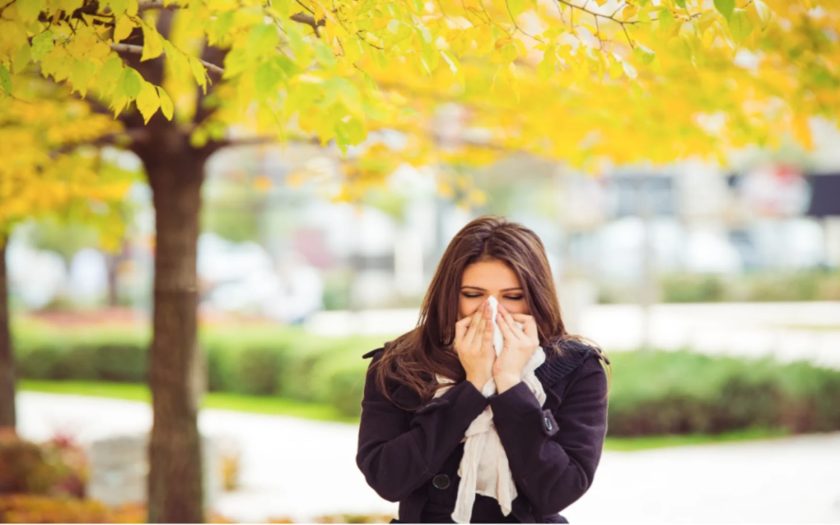- Mold spores.
The primary source of mold outdoors is fallen leaves. Allergy to leaves in autumn often arises due to fungi that feed on the fallen foliage. Dead plant cells provide a good nutrient base not only for Alternaria but also for many other fungi, including those whose spores are also allergenic. Moreover, recent studies have identified fungal spores as significant triggers for asthma, as fungi release spores by the thousands. In autumn, the main areas where mold spores accumulate are forests and parklands.
Such reaction can also occur in damp and moldy indoor environments or basements. Unlike pollen, the reaction to mold spores can be prolonged as the weather turns cold. To avoid mold allergens, it is recommended to:
- remove fallen leaves from your yard or garden and avoid piling them up;
- clean walls from mold regularly;
- reduce indoor humidity and maintain it between 25-50%;
- use antifungal products as a preventive measure.
- House dust mites.
As the weather becomes cooler and more humid, conditions become favorable for dust mites. As household dust mites multiply indoors, the concentration of allergens increases, leading to the onset or worsening of unpleasant symptoms. This is especially evident in poorly heated homes where the air is cool and damp. Another significant factor contributing to allergies is the presence of dust-collecting items in living rooms or bedrooms, such as carpets, wall coverings, soft floor coverings, upholstered furniture, toys, pillows and books.
- Animals.
Allergens are released by animals through their saliva, urine and dander. Therefore, if you have pets at home, it is impossible to completely avoid allergens. However, you can alleviate symptoms by thoroughly cleaning and ventilating the space and by not allowing pets to sleep in your bed. As with dust allergies, it is recommended to using vacuums with HEPA filters. Nowadays, HEPA filters have become a necessary feature in vacuum cleaners to prevent air pollution. The primary function of these filters is to trap fine dust particles sized 0.01-1 micrometers, which, settling in the human lungs, can negatively impact health.
The presence of allergies can be determined by a family doctor through skin allergy tests, which provide results within 15 minutes. However, testing may not always indicate current allergies but may show a person’s predisposition to allergic reactions in the future. Based on the results of the tests, a specialist may prescribe medications (for example, Alerid, Allersoothe) to alleviate symptoms. Treatment with a family doctor or a specialist in allergology and immunology can significantly reduce the intensity of symptoms. You can also consult specialized clinics that focus on reducing allergic sensitivity through immunotherapy.

